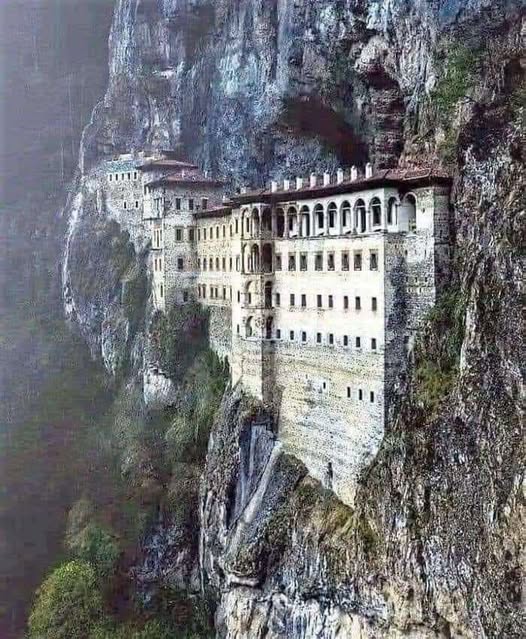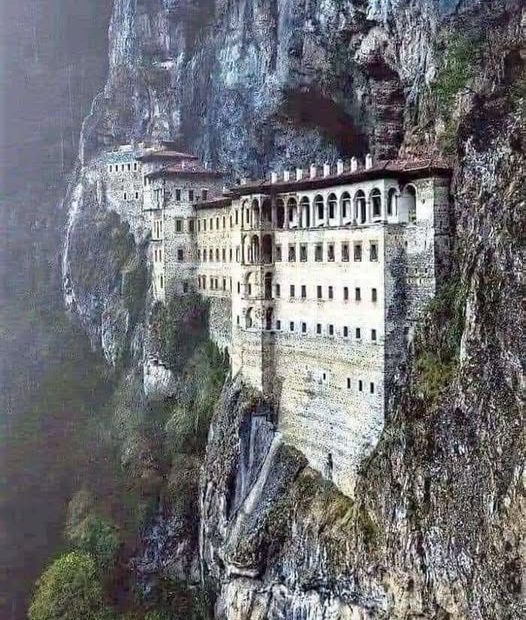Dunalastair Castle, an atmospheric abandoned castle in the Scottish Highlands, evokes a sense of mystery and bygone grandeur. Located near Kinloch Rannoch in Perthshire, this Victorian Gothic marvel is nestled within a picturesque landscape of rolling hills, lochs, and lush greenery. Though now a crumbling relic, Dunalastair Castle has a storied past tied to Scotland’s cultural and architectural heritage.
A Grand Beginning
The current structure was built in the mid-19th century by General Sir John Macdonald, a descendant of Clan Robertson. Designed in the Gothic Revival style, the castle’s striking façade featured ornate turrets, pointed arches, and intricate stonework, all hallmarks of the era. The property replaced an earlier mansion on the site, which itself had a long association with the Robertson clan and their ancestral lands.
An Abandoned Legacy
Once a hub of aristocratic life, Dunalastair Castle fell into disrepair during the 20th century. Following its use as a World War II hospital, the building’s upkeep proved too costly for its owners, leading to its abandonment. Nature has since begun to reclaim the site, with ivy-covered walls and weathered stone adding to the castle’s haunting allure.
Architectural Features
Despite its ruined state, many original details remain visible:
Turrets and Gables: The castle’s silhouette is punctuated by elegant turrets and steeply pitched gables, emphasizing its Gothic Revival charm.
Arched Windows: Traces of once-beautiful stained glass can be found in the arched windows, hinting at the castle’s former opulence.
Interior Details: Though unsafe for visitors, remnants of ornate plasterwork and fireplaces can still be glimpsed through open windows and doorways.
A Popular Destination
Dunalastair Castle has become a favorite for photographers, history enthusiasts, and urban explorers. Its remote location and overgrown surroundings create a sense of solitude, making it an evocative site for those seeking to immerse themselves in Scotland’s romantic past.
Conservation Challenges
Efforts to preserve Dunalastair Castle are complicated by its abandoned status and the high cost of restoration. However, its place in Scottish history and its striking appearance continue to draw attention from heritage groups and visitors alike.
Dunalastair Castle stands as a poignant reminder of Scotland’s rich history, blending natural beauty with the bittersweet decay of human ambition. Its ruined state ensures its allure endures, a haunting yet beautiful landmark in the heart of the Highlands.

The Robertson Clan and Dunalastair’s Historical Roots
Dunalastair Castle’s ties to the Robertson clan stretch back centuries, intertwining with Scotland’s tumultuous history. The clan, known in Gaelic as Clann Donnachaidh, played a significant role in events such as the Jacobite uprisings. Their ancestral lands in the heart of Perthshire have been home to various structures over time, with the castle as their most prominent architectural symbol in the Victorian era. The area around Dunalastair is steeped in legend, with connections to Robert the Bruce and stories of ancient battles and resilience.
Before the Victorian castle was constructed, a smaller house stood on the site. This earlier building was known as Mount Alexander and served as a seat for the Robertson family. Its transformation into Dunalastair Castle marked a period of opulence and modernity for the estate, reflecting the ambitions of General Sir John Macdonald and the era’s fascination with grand, Gothic-style estates.
The World War II Era and Decline
The castle’s life took a dramatic turn during World War II, when it was repurposed as a hospital and later as a shelter for displaced persons. After the war, the estate faced the common plight of many large properties in Britain: high maintenance costs and declining revenues. With the family’s resources stretched thin and no sustainable use for the building, the castle was abandoned in the mid-20th century.
As the decades passed, nature slowly began to overtake the structure. Ivy crept up its walls, roofs began to collapse, and the interior succumbed to the elements. Despite its derelict state, the castle’s skeletal remains tell the story of its grandeur. Each crack in the stone and broken window adds to its melancholic beauty, serving as a testament to the passage of time.
A Haunting Atmosphere
The atmosphere surrounding Dunalastair Castle is often described as eerie yet enchanting. On misty mornings, the castle appears to rise ethereally from its verdant surroundings, its silhouette reflecting in the nearby River Tummel. Birds nest in its crevices, and deer are often seen grazing on the grounds, adding to the sense of untamed wilderness. Visitors report an almost palpable sense of history, as if the walls themselves are whispering stories of their storied past.
The castle’s setting within the Dunalastair Estate also enhances its allure. The estate spans over 5,000 acres of rolling hills, woodlands, and lochs. Loch Rannoch, in particular, provides a stunning backdrop, its still waters mirroring the rugged beauty of the Highlands. The surrounding area is a haven for hikers and outdoor enthusiasts, offering trails that meander past ancient woodlands, quaint villages, and archaeological sites.
